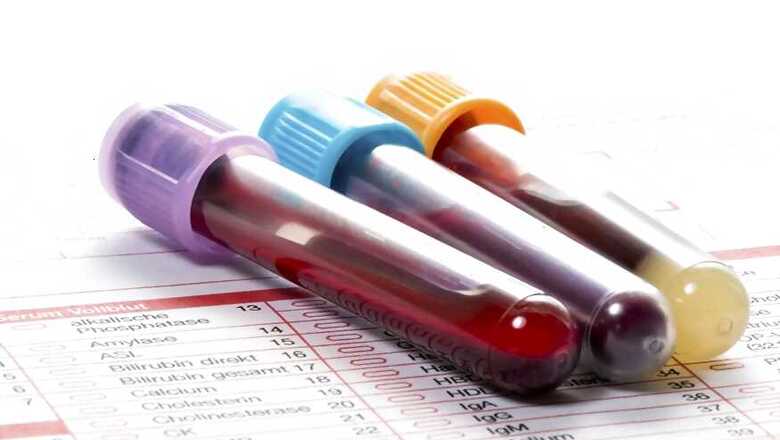
views
Washington: Scientists have developed a blood test using infrared spectroscopy that may diagnose two types of cancer, lymphoma and melanoma.
The findings, published in the journal Scientific Reports, suggest infrared spectroscopy can detect biochemical changes induced by non-Hodgkin's lymphoma, a solid tumorous condition of the immune system, and subcutaneous melanoma, a deadly form of skin cancer.
The technique has diagnostic potential as a screening technique for these cancers, according to researchers, including those from Georgia State University in the US.
They used mid-infrared spectroscopy to analyse blood serum derived from experimental mice and differentiate mice with non-Hodgkin's lymphoma and subcutaneous melanoma from healthy mice and also between these two tumorous conditions.
The mid-infrared spectral region of the electromagnetic spectrum is frequently used to characterise biological samples at the molecular level.
Studies have found the incidence rates of cutaneous melanoma have increased in many regions and populations over the last decade, specifically three to seven per cent per year among fair-skinned populations, researchers said.
The available diagnostic regimen for both cancers, which includes tissue examination and biopsy, is time-consuming, invasive and costly, resulting in small compliance rates of eligible populations for cancer prescreening.
Developing a rapid and reliable prescreening strategy for melanoma and lymphoma is critical because early diagnosis and treatment of these malignancies improve the patients' chances of survival.
Fourier Transform Infrared (FTIR) spectroscopy in Attenuated Total Reflection (ATR) sampling mode provides high-quality results with better reproducibility compared to other vibrational spectroscopy.
It has attracted scientists' attention for its rapid and reliable detection of various health conditions using body fluid samples.
"Our final goal is to say we can use this infrared technique to identify various diseases," said Unil Perera, Professor at Georgia State.
"This study shows infrared spectroscopy can identify cancer. Right now, when you go to the doctor, they do blood tests for sugar and several other things, but not for serious diseases like cancer and colitis. If you are a healthy person, there is a range that is normal.
The researchers used mice with lymphoma and melanoma cancers. Blood serum droplets extracted from cancerous mice and control mice were placed on an ATR crystal of the FTIR instrument.
Incident infrared beams were absorbed and reflected by the serum, creating a wave that was recorded and used to produce an absorbance curve with peaks that identified the presence of certain biomarkers in the sample.
The researchers compared the absorbance curves from the control and tumorous mice and assessed biochemical changes induced by non-Hodgkin's lymphoma and subcutaneous melanoma in the serum samples obtained from Yuan Liu's research lab in Georgia State's Department of Biology.
The study found remarkable differences between the ATR-FTIR spectra of serum samples from tumour-bearing mice with melanoma and non-Hodgkin's lymphoma and healthy, control mice.
The findings are applicable to humans because mice and humans have some biomarkers and chemicals in common, Perera said.




















Comments
0 comment